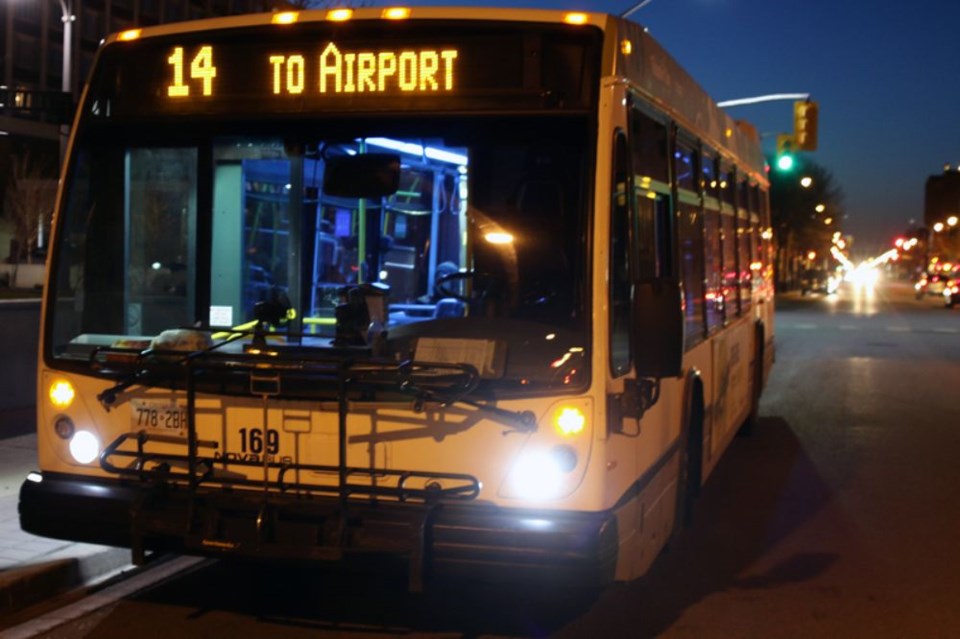THUNDER BAY — Thunder Bay Transit has outlined plans to respond to growing safety and abuse concerns, in a report that shows bus drivers reported well over 1,000 of those incidents since the start of 2022.
The report comes after the Amalgamated Transit Union Local 966, which represents drivers and mechanics, called for action in a presentation to city council earlier this year.
After raising concerns for years, the union pushed for a formal review of operator safety, along with steps like improved security at city hall.
“Countless labour-management meetings [have] resulted in no positive action being taken,” said union president Fred Caputo at the time.
In an interview Wednesday, Caputo struck a more positive tone, saying he sees signs of progress in the report and action plan released that day, which will be considered by council on Monday.
“We're making progress,” he said. “We're in a better place than we were six months ago, we're getting some timelines.”
“We're just going to keep on them and make sure they adhere to the timelines in the report, and if we have to go back to city council, that's what we'll do.”
Caputo said the issues are serious enough they’re driving passengers and drivers away from the service, threatening the city's goal of growing ridership.
“There's lots [of drivers] off on PTSD, there's not enough support,” he said. “It's very important to have a safe transit system where we can have everybody ride, increase ridership, and have the operators come to a safe work environment.”
The report offers data on 1,067 “negative interactions” reported by drivers on buses and around transit stops from the start of 2022 through June of this year.
The incidents include acts of aggression, assault, exposure to bodily fluid, intoxication, sexual harassment, and verbal altercations.
In recent years, that has included a hammer thrown through a bus window, a driver punched in the stomach, and another struck repeatedly on the head over a fare dispute.
Transit manager Brad Loroff said the numbers send a clear message.
"I think what stands out is there are bona fide safety incidents that front-line staff face, and the data in the report does show there's an increase."
Drivers faced 14 assaults, 51 instances of harassment, 57 acts of aggression, and eight incidents involving bodily fluid over that period.
They also dealt with hundreds of occasions when intoxication prompted safety concerns, including someone becoming unresponsive.
Those figures cover only behaviour targeted at drivers, while the totals were even higher for incidents impacting passengers. Those 525 incidents mostly involved intoxication, but also included dozens of reported assaults.
Around a quarter of incidents targeted drivers, while 45 per cent impacted passengers on board, and 31 per cent occurred around bus stops.
Leaders have suggested the numbers may not capture the scale of the problem, saying some incidents go unreported.
Drivers currently report incidents on paper forms, usually at the end of their shift. Caputo said that makes the process cumbersome and less likely to be completed.
“A lot of it goes unreported due to our reporting process,” he said. “It's all paper right now… The operators are experiencing difficulties, and they have to come back to work and fill out these reports. So a lot of them are just choosing not to.”
One of the actions outlined in the report is automating and simplifying the reporting system.
Others include de-escalation training, set to be delivered to all drivers by early 2024.
Protective barriers for drivers — a step the ATU has long called for — will be added, the report says, but not until mid- to late 2025.
The delay is for installation of a new fare system that will allow boarding with the tap of a cell phone or smartcard. The new fare boxes have a different shape that will impact how barriers are installed.
Buses are currently outfitted with flimsier “bio-shields” added during the COVID-19 pandemic.
The city will also consider a pilot program that would work with social service and health agencies and street outreach teams to supplement security at city hall, an approach tried in larger cities.
“I think it's understood out there now that there isn't always a good security or police response, that it may not be the right response for the situation,” said Loroff. “We're learning as we go about what other opportunities [exist] to help with these types of social situations that are… affecting the transit service.”
One step Caputo called crucial is an expansion to Transit’s dispatch centre and on-street support, which the report says should be in place by the first quarter of 2024.
Transit is also exploring a potential driver peer support program for psychological support.
Loroff said transit will continue to monitor incident data year-over-year to identify trends and areas of concern.
While expressing cautious optimism, Caputo said the effectiveness of the steps may be limited in the face of deep-seated social challenges.
"We're in an epidemic for homelessness, drug abuse," he said. "It's going to be very difficult."
